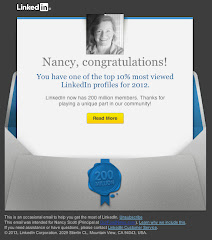Today’s webinar from WhichTestWon, focused listeners again on the testing of landing pages.
Note: With the advent of the ubiquitous QR code, landing pages will certainly take on greater significance than ever, so it pays to get this fundamental part of direct marketing right.
Here are some quick tips from presenters Anne Holland, publisher of WhichTestWon.com, and Anna Talerico, executive vice president of Ion Interactive.
1. Test the big picture stuff -- the landing page experience, the page layout, the offer, and the aesthetics.
2. What to test first -- Headline wording, distraction-removal, images, forms/check-outs, and buttons/response links.
3. Multivariate versus A/B Testing. A/B testing is about testing one element on a page against another element on the page, or one page against another. Multivariate testing is more about testing multiple elements on a single page. Multivariate testing isn’t “fancier,” but it’s more complex, so it does take longer to get significant results.
4. When you’re testing, it takes time to reach desired “confidence levels.” Many marketers want at least a 95% confidence level in order to run the winner forward, so it’s important to wait until the test has had at least two – preferably three -- weeks to run. Things can shift even at the highest level of confidence, so give the test time. No matter how eager you are to talk about the test, hold your results close to the chest until sufficient time has been invested. On the other hand, when there’s a big variance in one test result versus another, it’s okay to consider moving earlier to remove the poor player. Just be careful not to rush it.
5. What four outcomes matter to your CFO? More sales, more qualified leads, lower cost per lead, and higher revenues per cart -- that’s what your test results are working toward. Therefore, be careful about testing for testing’s sake and never lose sight of these four desired outcomes in testing.
6. The “thank you” page where folks land to pick-up their free giveaways should be used to influence what you are testing at the top of the experience. This is your first conversion for that person and should be the start of a great relationship. It's worth time to get your thank-you page right.
Q&A
What if you have to pull the plug on a never-ending test in which results remain unclear? This may be one time you need to use your good marketing intuition to make a choice. Which one of the options do you not want to work with any longer? Pull that one.
How do you test without code or IT help? Marketers have a choice of many testing tools that facilitate self-sufficient operation (Google, for example). WhichTestWon has a 5-minute video that instructs marketers how to get started in testing without IT help.
If I have dynamic pages, how do I test? Usually when you have dynamic/changing content on site, you can still test the shell of the page and the layout of the page.
Do I have to wait 21 days for email testing? No, email is a little different. On the other hand, you want to wait until you have sufficient data (for example, it takes time to measure cart abandonment or reaction to shifting banner ads).
How do I know if my results are statistically significant? This information will be part of the reports you’re getting. If this feature isn’t part of your reporting system, change systems.
-- scrubbed by Marketing Brillo

